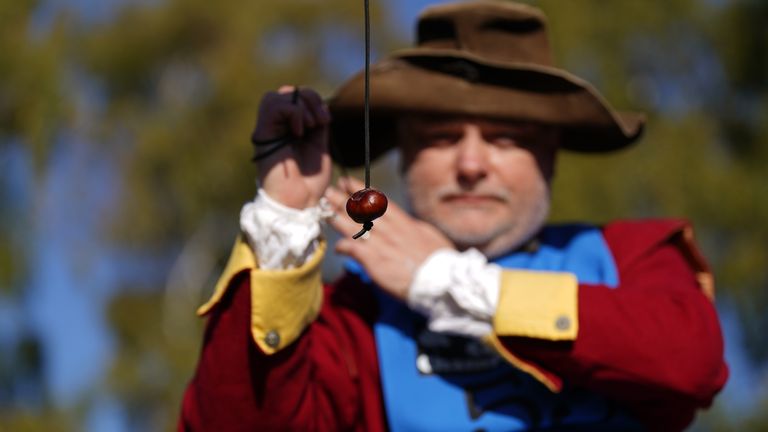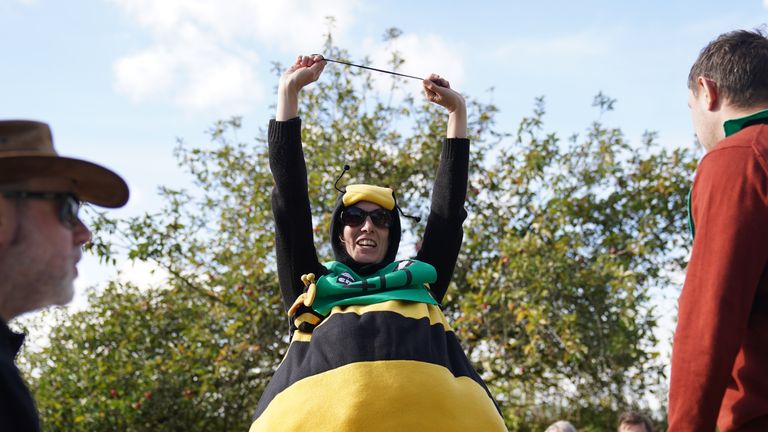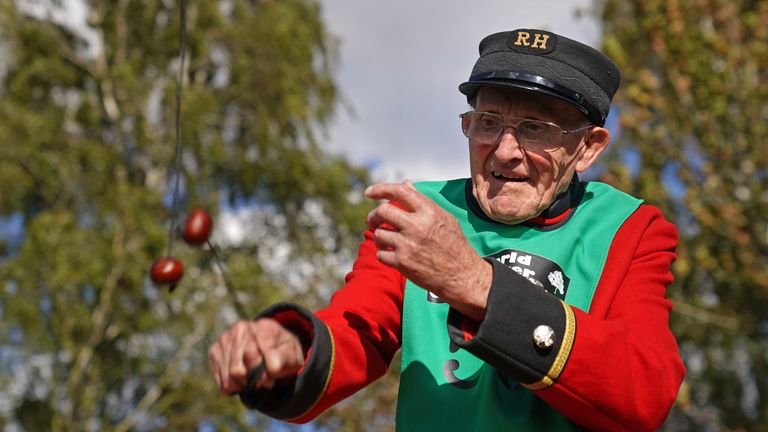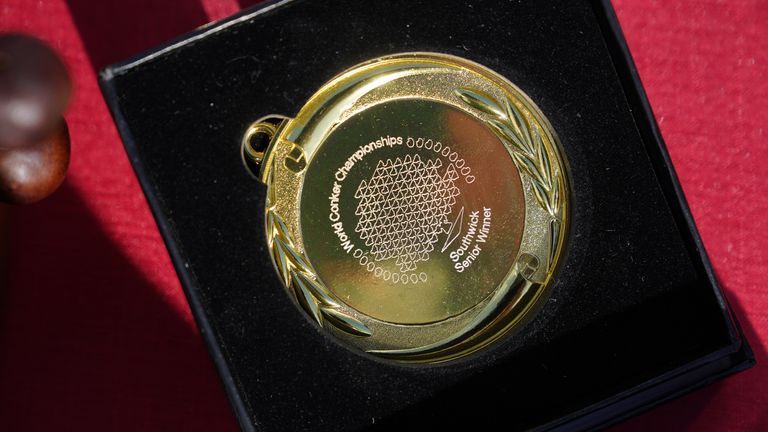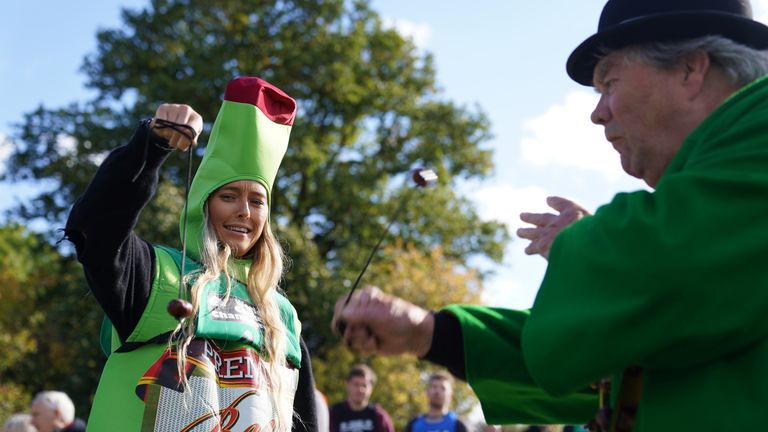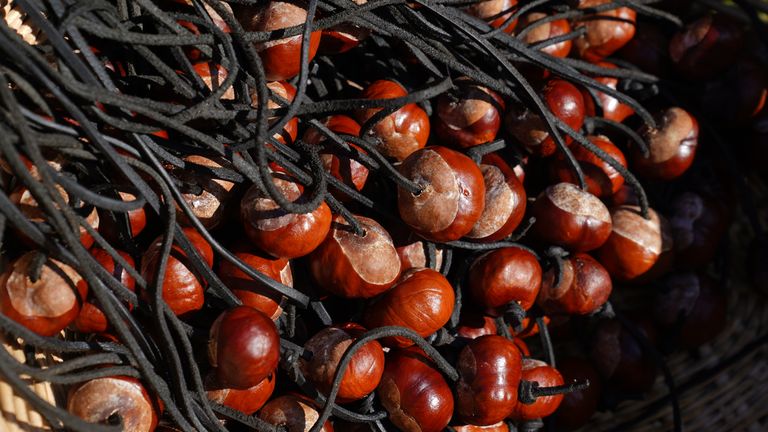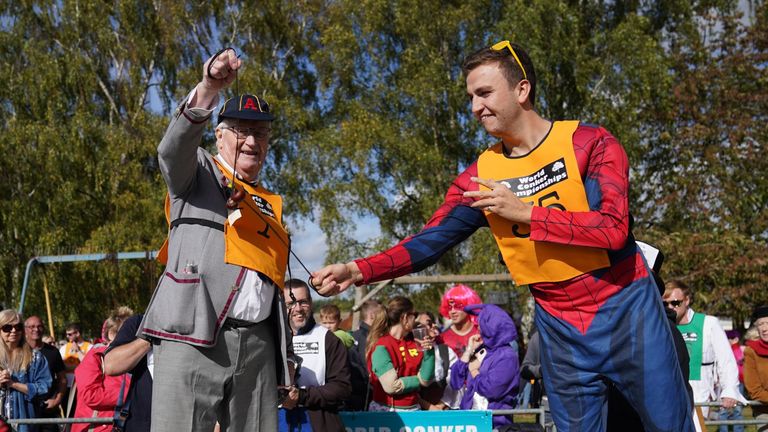Only in Britain... Who conkered the world at the global conker championships?
Spidy took part, as did some Chelsea Pensioners, a woman dressed as a beer bottle and a man named Will. But was William The Conkerer?
Sunday 9 October 2022 20:16, UK
More than 300 competitors, watched by 5,000 spectators, have taken part in the World Conker Championships - back after a COVID hiatus.
No costume was off limits for the event which took place at the Shuckburgh Arms pub in Southwick, Northamptonshire, on Sunday.
Stephanie Withall - a previous champion - donned a bee outfit to pay homage to her job as a beekeeper.
There was also an Elvis lookalike, a Spider-Man, and a competitor dressed as a beer bottle.
Chelsea Pensioners got in on the action too, including 92-year-old John Riley.
All competitors need to follow a stringent set of rules to ensure the event is as fair as possible, which includes the conkers and laces used being provided by organisers, while laces cannot be knotted further or altered.
That old chestnut
This obviously rules out soaking conkers overnight in vinegar, a popular strengthening trick used by 1970s schoolchildren, who saw the onset of conker season as being as important as the start of the football and cricket seasons.
Additionally, a minimum length of no less than 20cm of lace must be between knuckle and nut for both the "striking" and "receiving" players.
Conkers, which are the seed of the horse chestnut tree, are also drawn "blind" from a bag, with players being allowed to reject up to three.
To win, the opponent's conker must be smashed and if both are broken at the same time, new conkers are drawn.
Further rules apply if a game lasts more than five minutes and penalties can also be given out for foul play.
Aside from the fun people have at the event, the main aim of the championships is to support charities helping the visually impaired.
Since the event's inception in 1965, a total of £420,000 has been raised.
According to the World Conker Championship organisation, the first recorded game of conkers is believed to have taken place in the Isle of Wight in 1848, while the World Championships started in Ashton, Northamptonshire, in 1965, on the village green which is surrounded by horse chestnut trees.
In the end, the women's event was won by Fee Aylmore, who had been trying to win for 32 years, and the men's competition by Randy Topolinski from Calgary in Canada - world conkerers, both of them.
Ms Aylmore, 49, a school nurse who lives a few miles from Southwick, said she was delighted.
"If you want something badly enough, keep doing it," she said.
"It took me 31 years of playing, but eventually I won this year, and I am totally thrilled."
